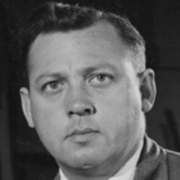
John Hutchinson
Enlisting in the Army while under age may be indicative of a longing for adventure, but the adventure that characterised the life of John Hutchinson was that of the motion picture cameraman. After being thrown out of the army he saw war service with the RNZAF. In 1946, at the age of 21, Hutchinson joined the National Film Unit.
As a cameraman trainee, he was soon filming items for the Weekly Review. While visiting Christchurch on a routine assignment in November 1947, he was on the spot to film the destruction by fire of Ballantyne’s department store. In an unparalleled newsreel scoop, all the filmstock on hand was used up capturing the drama of the tragic fire at its height.
Before Weekly Review was discontinued in 1950, Hutchinson had filmed over 50 items for the long-running magazine-film series, including the single-subject Fifty-Four Forty South (1950, released as Weekly Review No. 438). To make it, Hutchinson travelled aboard the HMNZS Tutira on a supply trip to the sub-antarctic Campbell and Macquarie Islands.
Constant travel was the lot of the NFU cameraman, with only occasional calls for studio-based filming, The Elysian Bus (1951) being a rare example of Hutchinson’s studio work. From 1952 onwards, he filmed or assisted with filming over 30 items for the monthly magazine series Pictorial Parade. Among these items were royal tours by the Duke of Edinburgh and the Queen Mother.
In late 1956 and early 1957 Hutchinson assisted Hollywood studio MGM in scouting locations and filming the New Zealand scenes for WWII feature Until They Sail, co-starring Paul Newman. He also renewed his acquaintance with the RNZAF for the filming of The Eventful Years, released to mark the Air Force’s 1958 coming of age.
This led to arguably his most memorable film, Jetobatics (1959), which he filmed and directed. For 14 flights over five days he squeezed himself and his camera into the cockpit of a Vampire jet, following the aerobatic team as it performed its contortions above Ohakea, and captured the thrill of hurtling through the air, rolling, looping, and diving, up, down, and upside-down. The film was awarded the Diploma of Merit at the 1959 Edinburgh Film Festival, and went on to win other awards.
Next came the down-to-earth thrills of international rugby encounters, when he led the three-man camera team that toured with the 1959 British Lions team. Seven matches were filmed, as well as incidental material, all incorporated into the documentary feature record of the tour, The Lion and the Kiwi (1959).
An assignment at the end of 1959 called for further overseas travel: this time across Asia with director David Fowler, making Colombo Plan film From Indonesia to India. Coming home meant reverting to constant domestic travel, and such major undertakings as filming the 1961 French Rugby tour and the Queen’s second visit to New Zealand in 1963.
One of his last camera jobs saw him return to Ohakea with the team that filmed the air show for Pictorial Parade No. 159 - Air Force Day 1964.
In 20 years with the NFU he rose through the ranks from trainee to chief cameraman, the position Hutchinson held when he died, after a short illness, on 28 September, 1965. He was 40.
Profile published on 11 June 2013; writing and original research by Clive Sowry
Sources include
Photo of John Hutchinson courtesy of Archives New Zealand/Te Rua Mahara o te Kāwanatanga, Wellington Office. Reference AAQT 6401 A39924
'The Inside Column' – The Dominion, 30 September 1965, page 3
‘Death of noted film cameraman’ – The Dominion, 29 September 1965, page 3
'Fasten Seat Belts' – The Dominion, 20 February 1959, page 11
'Documentary Film of RNZAF; Wigram Scenes' – The Press, 15 October 1957, page 15
'Penguin Omelets Rival Whitebait' – The Evening Post, 7 December 1949, page 10